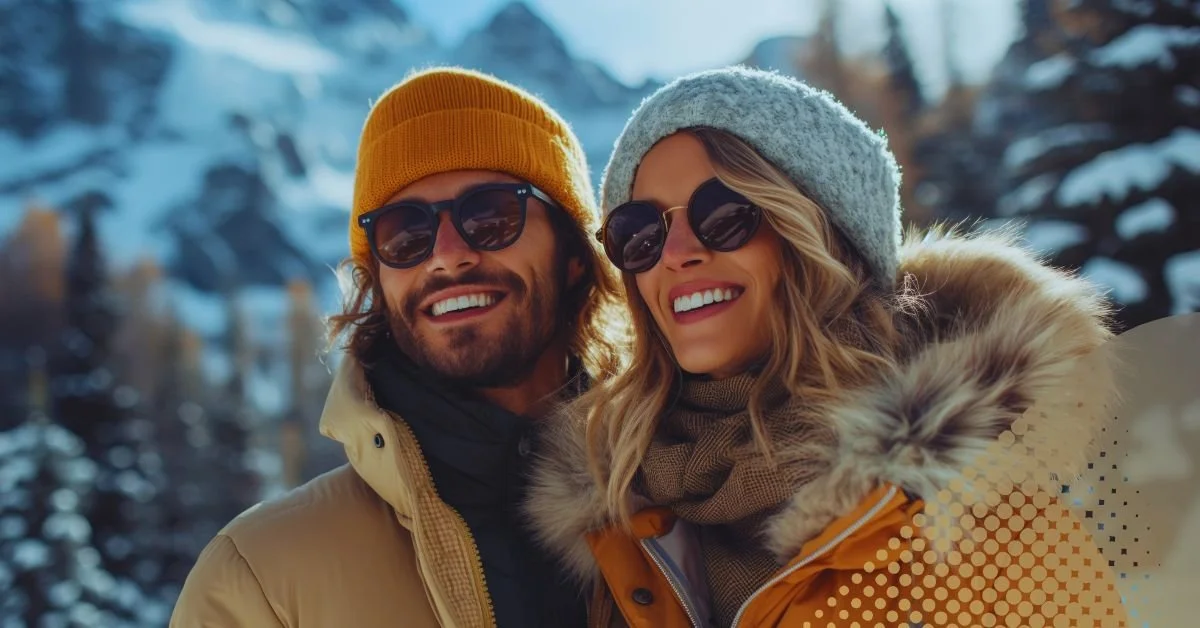How to Read an Eye Prescription in Canada: A Clear Guide by an Optometrist
If you’ve ever looked at your eyeglass or contact lens prescription and thought, “What does any of this mean?” You’re not alone. Between all the abbreviations, numbers, and symbols, a vision prescription in Canada can feel more like a math problem than a medical document. But don’t worry — this guide breaks it all down so you can finally understand what your optometrist wrote and what it means for your vision.
Quick Terms You’ll See on a Canadian Eye Prescription
Reading your eyeglass prescription can initially seem confusing due to the abbreviations and numbers. Here's an easy guide to help you understand the key elements of your prescription. Let’s break down the most common parts of a typical Canadian eyeglass prescription:
OD and OS
OD (oculus dexter) = right eye
OS (oculus sinister) = left eye
OU = both eyes
Sphere (SPH)
This is the main number that corrects for nearsightedness (-) or farsightedness (+)
Measured in diopters, the higher the number, the stronger the prescription
Cylinder (CYL)
This shows whether you have astigmatism — when your cornea isn’t perfectly round
Also measured in diopters
If your doctor writes D.S. (diopter sphere) instead, it means no astigmatism correction is needed
Axis
Tells us the orientation of your astigmatism
A number from 001 to 180
Always written with 3 digits (e.g. 045 instead of just 45) for clarity
Add
Indicates the additional magnification for reading or progressive lenses
This is common for patients needing help with near vision, typically starting in their 40s
Prism
Corrects for eye alignment issues
Used when patients have double vision or eye teaming problems
PD (Pupillary Distance)
The distance between the centres of your pupils (in mm)
Monocular PD (each eye measured individually) is more precise than binocular PD (single value)
This measurement is essential when lenses are being made, especially for progressive or high-index lenses
Example of a Typical Eyeglass Prescription
Let’s walk through what a typical eyeglass prescription in Canada might look like:
OD: -2.00 -1.25 x 090
OS: -1.50 -1.00 x 085
Add: +2.00
Here’s what each part means:
OD (right eye) and OS (left eye) are standard abbreviations used in prescriptions.
The first number (-2.00 and -1.50) is the Sphere (SPH), indicating how nearsighted or farsighted you are.
The second number (-1.25 and -1.00) is the Cylinder (CYL), showing the amount of astigmatism correction.
The third number (090 and 085) is the Axis, which tells the lens where to position the astigmatism correction.
The Add value (+2.00) is the additional magnifying power for reading or progressive lenses. It’s usually the same for both eyes but can vary — especially if one eye has had surgery or if there’s a significant difference in prescription strength between eyes.
This format is typical for adult prescriptions and is the basis for designing your lenses.
Example of a Typical Contact Lens Prescription in Canada
A contact lens prescription looks different from an eyeglass prescription — and for good reason. Contact lenses sit directly on your eyes, while eyeglasses sit a few millimetres away, which affects the lens power and design.
Here’s what a typical Canadian contact lens prescription might look like:
OD: -2.25 BC 8.3 DIA 14.2
OS: -2.00 BC 8.3 DIA 14.2
Brand: Precision 1
Here’s what each part means:
OD / OS: Right eye (OD) and left eye (OS)
Power (PWR or SPH): The strength of the lens, often slightly different from your eyeglass prescription
BC (Base Curve): A number like 8.4 or 8.6 that indicates the curvature of the lens — matching the shape of your cornea for a proper fit
DIA (Diameter): The size of the lens from edge to edge, usually around 13.8 to 14.5 mm
Brand / Lens Type: Contact lenses are FDA-approved as specific products, so the brand and type (e.g. toric, multifocal) must be specified
Additional fields (for toric or multifocal lenses):
CYL & Axis: For astigmatism correction
Add: For reading or multifocal correction. This can be a number or the terms, low-med-high
🔍 Important: You can’t use your eyeglass prescription to buy contact lenses. A proper contact lens fitting with an Edmonton optometrist is required to determine the right size, shape, and material for your eyes.
Does My Eyeglass Prescription Include Lens Type or Material?
Your eyeglass prescription tells you what correction your eyes need — but it doesn’t tell you how that correction should be delivered. In other words, it won’t specify the lens design, lens material, or coatings that are best for your lifestyle or vision needs.
This is where a Licensed Optician plays a critical role. They’ll help you choose between options like:
Progressive lenses vs. single-vision or bifocals
High-index lenses for strong prescriptions (thinner and lighter)
Blue light filters, anti-reflective coatings, or photochromic (transition) lenses
Office or task-specific lenses for extended computer or desk work
Even with the same prescription values, the lens design and materials you choose can make a huge difference in how comfortable, durable, and effective your glasses are day to day. Having the right guidance ensures your eyewear isn’t just functional — it’s customized for the way you live and work.
When Does an Eyeglass Prescription Expire in Canada?
In Canada, your eyeglass prescription is typically valid for one to two years, depending on your optometrist’s assessment of your eye health and how stable your vision is. Unlike what many people believe, prescription expiry isn’t determined by your insurance — it’s a medical decision based on your individual needs.
Here’s what affects how long your prescription is valid:
Children and seniors often experience faster vision changes and usually need annual exams
Patients with conditions like diabetes, glaucoma, or a history of eye surgery may also need more frequent updates
Healthy adults with stable vision may be given a 2-year validity
While some optical stores might honour older prescriptions, it’s not recommended to refill one that’s more than two years old. Vision can shift significantly over time, and using outdated lenses can lead to blurred vision, eye strain, and headaches.
Bottom line: If your glasses aren’t as clear as they used to be, book an eye exam — don’t guess. A proper check-up ensures your prescription is accurate and your eye health is on track.
You’re Entitled to Your Prescription — No Need to Ask
By law in Canada, your optometrist must give you a copy of your eyeglass or contact lens prescription immediately after your eye exam — no questions asked. You do not need to request it, and you should never feel pressured to purchase glasses on the spot.
This regulation exists to protect you. It promotes transparency, consumer choice, and ensures you can shop around for eyewear that best suits your style, needs, and budget. Reputable clinics will hand over your prescription without hesitation.
🚩 Red flag: If you're told to "ask the sales associate" for your prescription or it’s only offered after discussing glasses, that’s not okay. It's a tactic to control the sale — not a reflection of quality care.
Also be cautious of clinics offering “free eye exams with eyewear purchase.” These promotions can sometimes reflect a compromise in care quality or impartiality. Always prioritize clinics that focus on your long-term eye health, not just the sale.
Ready to Update Your Prescription? Book an Eye Exam in Edmonton Today
If your glasses aren’t working like they used to — or if it’s simply been over a year — it’s time to book a comprehensive eye exam in Edmonton. At Helio Optometry, our experienced optometrists use advanced diagnostic tools to ensure your prescription is accurate and your eyes are healthy.
Whether you need eyeglasses, contact lenses, or just peace of mind, we’ll walk you through every option with care and transparency. We’re proud to offer cutting-edge lens technology, same-day prescription updates, and a friendly team that puts your vision first.
👓 Take the guesswork out of your next pair of glasses.
📍 Visit one of the top-rated optometrist clinics in Edmonton.
📅 Book your eye exam with Helio Optometry today.












